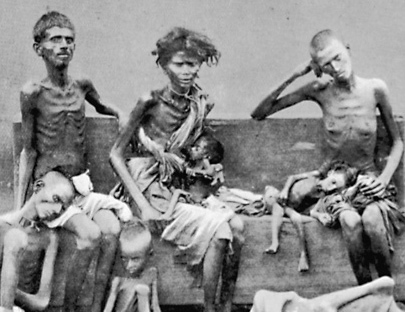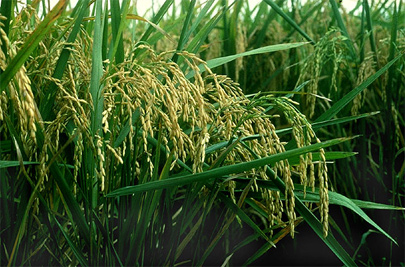You will now put your knowledge to use in this case study. Given background information about the Green Revolution in India, you will draw conclusions about the agricultural impact in this society.
![]() Click on star on the map below to see a closeup map of India.
Click on star on the map below to see a closeup map of India.
Source: Asia, Central Intelligence Agency.
Background: The world's worst recorded food disaster happened in 1943 in British-ruled India. Known as the Bengal Famine, an estimated four million people died of hunger that year alone in eastern India. There were several contributing factors that created this famine:

Source: India Famine Family, Wikipedia
This is a photo of an Indian family who were affected by the Bengal Famine.
The British left India in 1947 while India continued to deal with the horrors of the famine. Now free of the British, India focused on securing their food supply. The people of India also wanted to eliminate the possibility of unscrupulous traders hoarding the food supply to make a profit.
Laws were created to ensure that traders would never again hoard the food supply for the purpose of profit. Between 1947 and 1967 efforts by India to secure the food supply were somewhat unsuccessful. The Green Revolution addressed the shortage of the food supply.

Source: Lemont rice plant, U.S. Department of Agriculture.
Lemont was the first high-yielding semidwarf rice variety that matured early and had high milling yields.
The Green Revolution was a movement to improve farming practices through agricultural innovations in third world countries. India is not the only country involved, but it is the most successful. India’s Green Revolution took place from 1967-1978.
Here are the three parts of The Green Revolution in India:
After employing these methods, India experienced great success in agriculture:
Read this article about farming in India today.
Using your notes, answer the following question based on the case study of The Green Revolution.